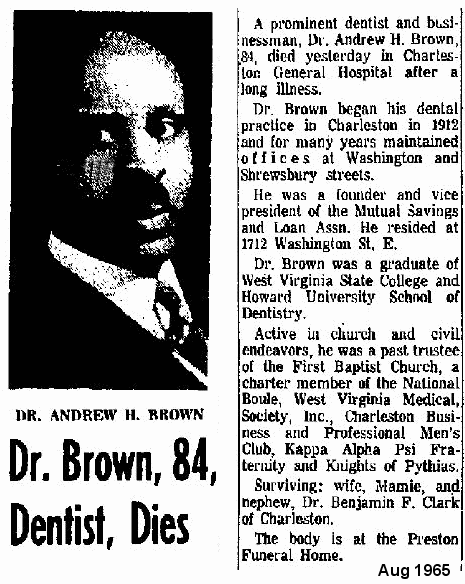Cap Ferguson Hotel and Business Center "The Block" Another area I grew up around ...  The
Ferguson Business Center, which included the 72-room Ferguson hotel, a
movie theater, restaurant, beauty shop and business offices at
Washington Street East and Shrewsbury Street. The hotel complex became
the cornerstone of “The Block,” the center of black commercial and
cultural life in Charleston and was designed by John C. Norman,
Charleston’s first black architect. (Norman's son was the famed
Artificial heart pioneer Dr. John C. Norman Jr. )
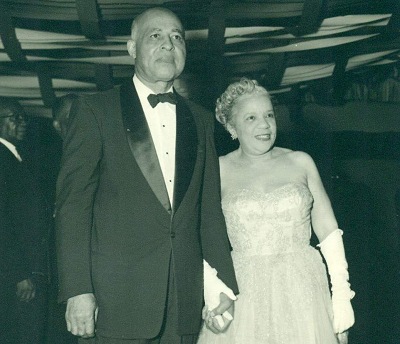
In addition to anchoring the main enterprise zone for black Charleston,
the Ferguson Hotel and its nearby restaurants, shops and entertainment
venues became a haven for African-Americans traveling through Charleston
and encountering its Jim Crow laws.
In World War I Cap Ferguson
had been the first black officer to command a troop ship to
France, hence the nickname. By 1923 he added to the hotel
a cafe, barber shop, haberdashery, theater, smoke shop and
a ballroom. Adjoining the Ferguson Hotel, a building was being
constructed by black real estate agent Anderson H. Brown.
The building extended from Washington Street around the corner
to Shrewsbury Street. Eventually, in the building would be
a pharmacy, Mr. Brown's real estate office, a beauty shop,
a restaurant, a printing shop, barber shop, pool hall, dentist, and
many other businesses.
|
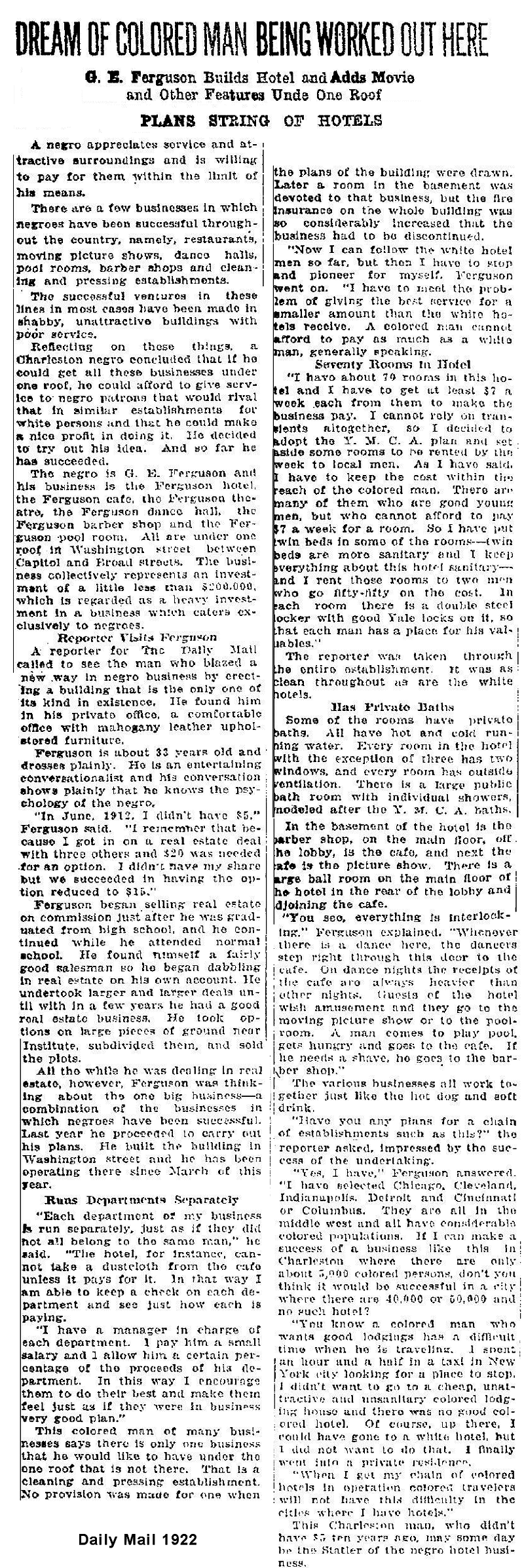
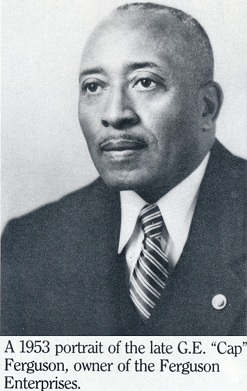
This
property was the focal point of "The Block", which comprised
mostly of Black business and homes. The Black Garnet School was
just around the corner, as was the Black funeral home. (Garnet was one
of three high schools in the Kanawha Valley built for African American
students. It closed as a high school in 1956.) Several prominent
Black families lived in close proximity to The Block, as
did a few White families and poor Whites & Blacks alike. I
lived here at several locations as a child myself.
|
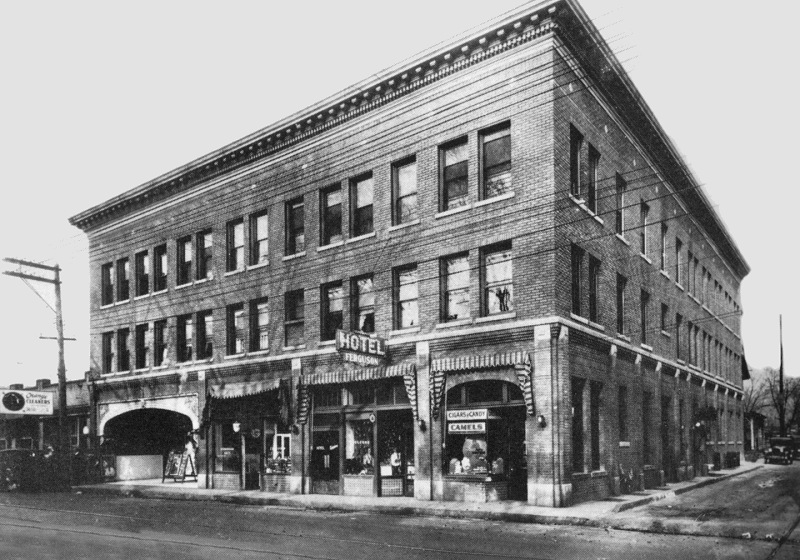

 Ferguson,
Gurnett Edinburgh (1888-1982) — also known as G. E. Ferguson — of
Charleston, Kanawha County, W.Va. Born in Fayette County, W.Va.,
October 17, 1888. Republican. Served in the U.S. Army during World War
I; school teacher; real estate business; hotelier; director, West
Virginia Bureau of Negro Welfare and Statistics; alternate delegate to
Republican National Convention from West Virginia, 1940, 1948;
candidate for West Virginia state house of delegates from Kanawha
County, 1942. African ancestry. Member, Freemasons; Shriners. Died
December 26, 1982 (age 94 years, 70 days). Ferguson,
Gurnett Edinburgh (1888-1982) — also known as G. E. Ferguson — of
Charleston, Kanawha County, W.Va. Born in Fayette County, W.Va.,
October 17, 1888. Republican. Served in the U.S. Army during World War
I; school teacher; real estate business; hotelier; director, West
Virginia Bureau of Negro Welfare and Statistics; alternate delegate to
Republican National Convention from West Virginia, 1940, 1948;
candidate for West Virginia state house of delegates from Kanawha
County, 1942. African ancestry. Member, Freemasons; Shriners. Died
December 26, 1982 (age 94 years, 70 days).
|
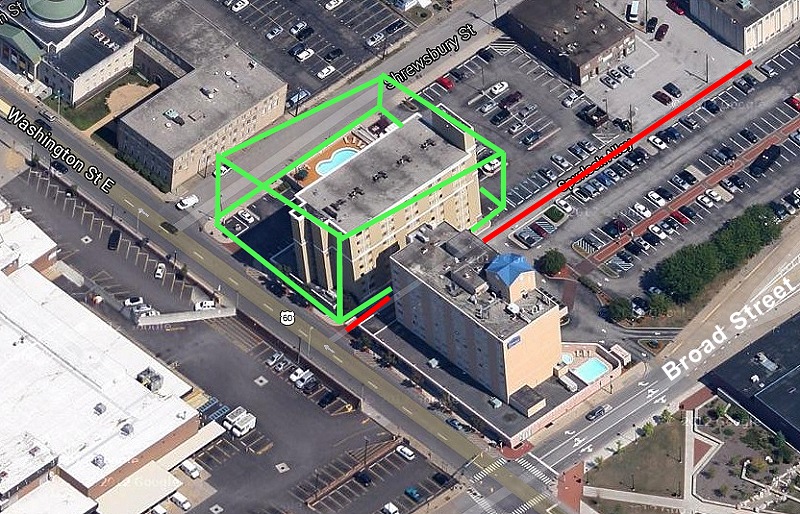
This photo shows the footprint of the old Ferguson Hotel complex. The red line is Spurlock Alley, which you can plainly see in the two old photos above. The Post Office is in the lower left hand corner. The two buildings are now hotels. 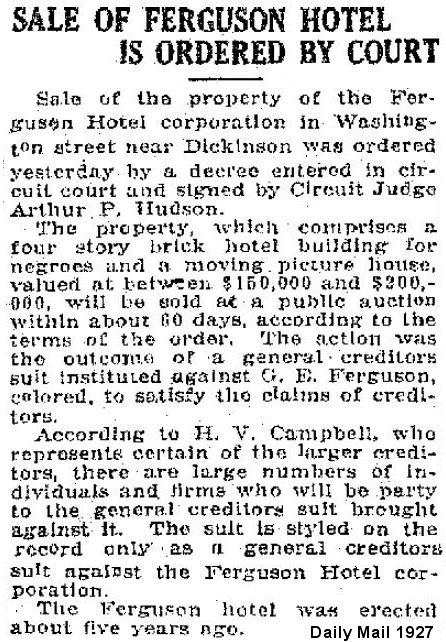
I'm not sure what to make of this. Did Cap lose the hotel and go bankrupt?
Authors
Note: As a child, I delivered newspapers to this complex.
One man I delivered to was a Dr Brown, a Black dentist, and my
first girlfriend went to this dentist when she was young. The
thing I
DO remember was that his equipment, such as his "spit bowl" and other
parts of the dental chair were black, not white as you might
expect.
Dr Brown would die the following year I stopped passing papers.
As two of the houses I lived in were just around the corner on
Shrewsbury St, I spent a lot of time near the Ferguson.
|
Another Building nearby that is now a parking lot: 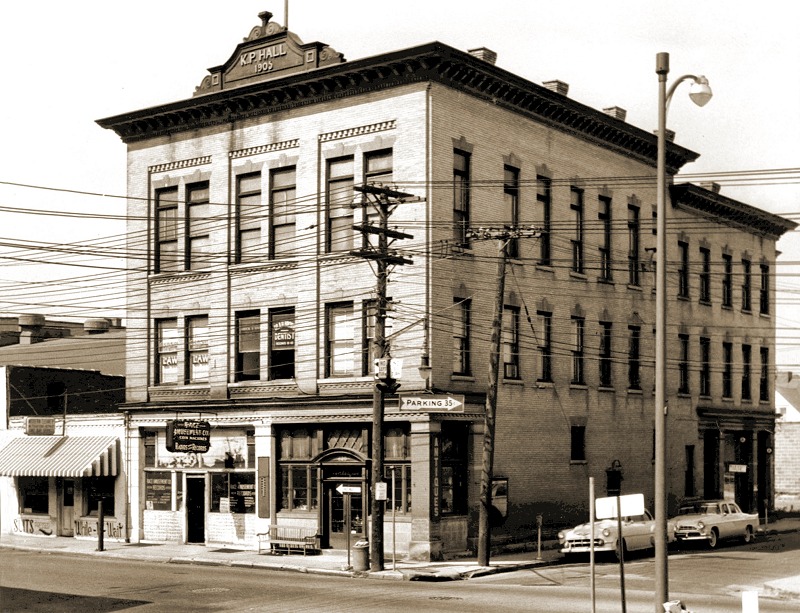
The Colored Knights of Pythias Hall
Located
on the corner of Washington and Dickinson Streets, the Colored
Knights of Pythias Hall was the center of Black culture after the
church. Samuel W. Starks was born in Charleston in 1866. On
September 18, 1892, he formed a West Virginia Grand Lodge of the
Knights of Pythias, one of the leading secret black fraternal orders of
the day. Starks was grand chancellor of the state organization
from the time of its inception. He became the national vice chancellor
in 1897 and national supreme chancellor in 1901. In 1905, the
Charleston chapter of the Knights of Pythias built a structure to house
their offices and lodge rooms, as well as a barber shop, grocery store,
and pharmacy. The building was located on the corner of Washington and
Dickinson Streets, but was later razed and is now the location of a
parking lot.
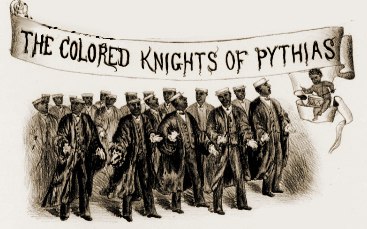
|
BACK
|






 Ferguson,
Gurnett Edinburgh (1888-1982) — also known as G. E. Ferguson — of
Charleston, Kanawha County, W.Va. Born in Fayette County, W.Va.,
October 17, 1888. Republican. Served in the U.S. Army during World War
I; school teacher; real estate business; hotelier; director, West
Virginia Bureau of Negro Welfare and Statistics; alternate delegate to
Republican National Convention from West Virginia, 1940, 1948;
candidate for West Virginia state house of delegates from Kanawha
County, 1942. African ancestry. Member, Freemasons; Shriners. Died
December 26, 1982 (age 94 years, 70 days).
Ferguson,
Gurnett Edinburgh (1888-1982) — also known as G. E. Ferguson — of
Charleston, Kanawha County, W.Va. Born in Fayette County, W.Va.,
October 17, 1888. Republican. Served in the U.S. Army during World War
I; school teacher; real estate business; hotelier; director, West
Virginia Bureau of Negro Welfare and Statistics; alternate delegate to
Republican National Convention from West Virginia, 1940, 1948;
candidate for West Virginia state house of delegates from Kanawha
County, 1942. African ancestry. Member, Freemasons; Shriners. Died
December 26, 1982 (age 94 years, 70 days). 

